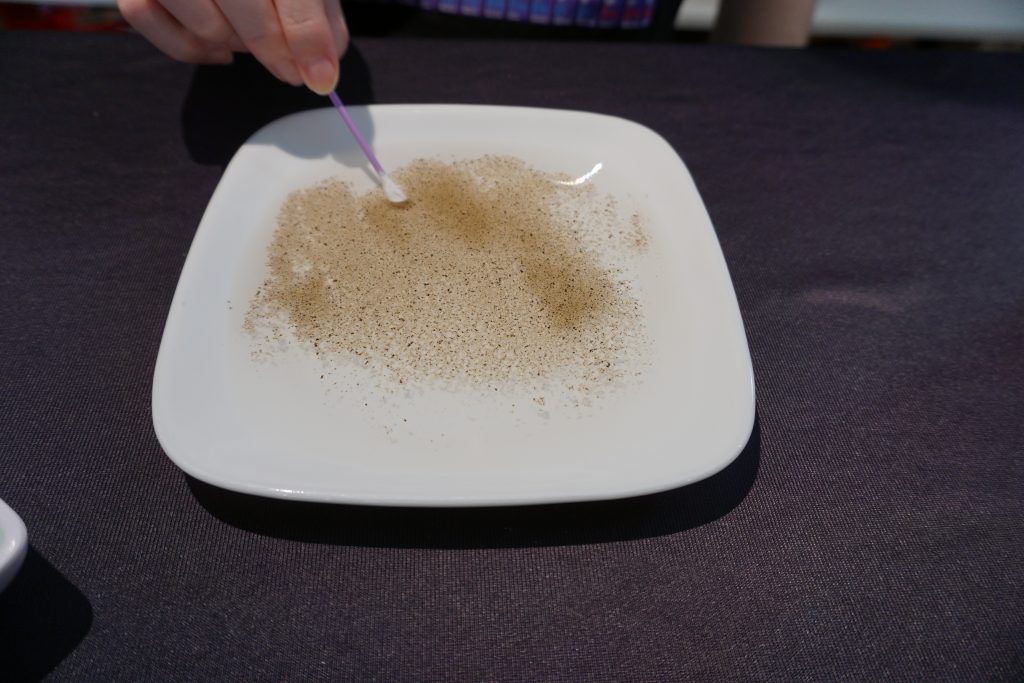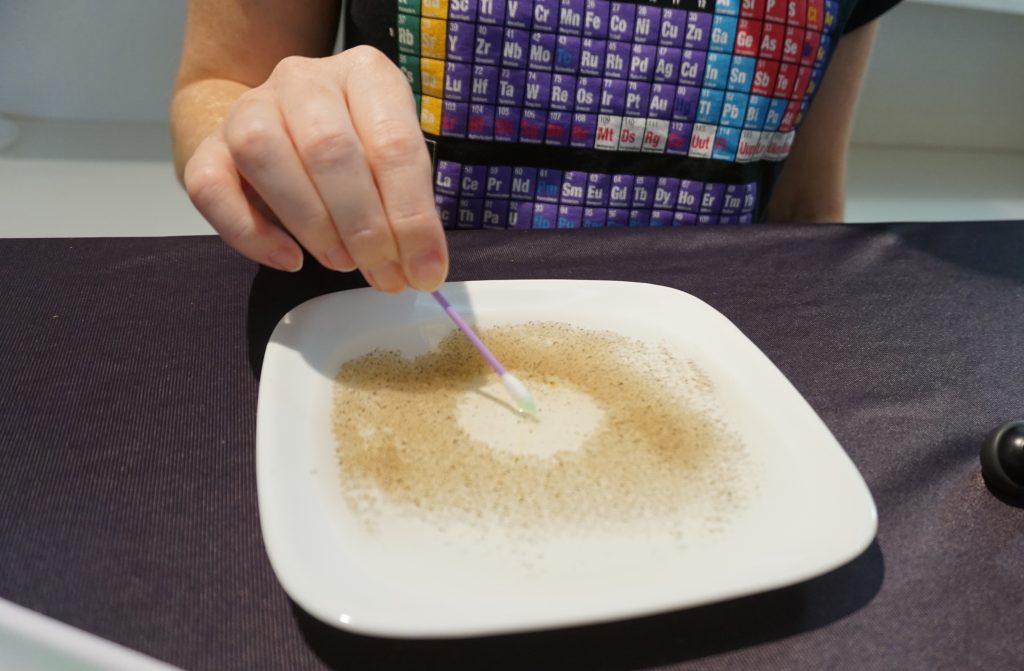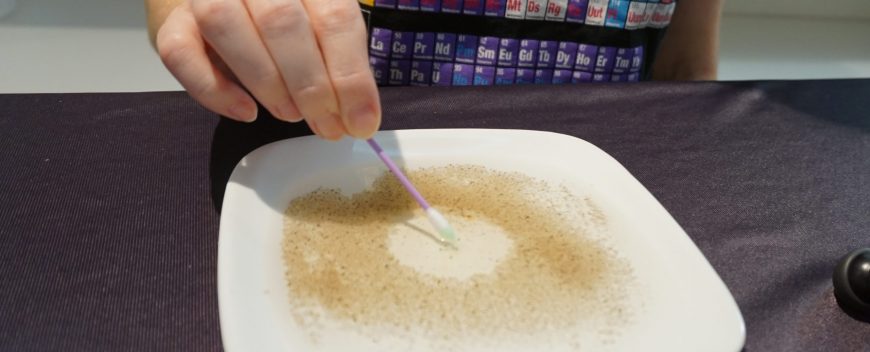Materials
- White plate
- Finely ground pepper
- Detergent or liquid soap
- Water
- Cotton tip (or finger)

Instructions
- Pour some water into the plate, then gently add a light sprinkling of pepper.

- Pour some water into the plate, then gently add a light sprinkling of pepper.

- Put a small amount of detergent or liquid soap onto your cotton tip, then touch it to the surface of the water again. Observe what happens.

Further Investigation
- What happens if you touch the surface of the water with the detergent a second time?
- Repeat the experiment (clean the plate in between) with different types of soaps or detergents. What differences do you observe in the results?
- Clean and refill the plate with water. What other small, light objects can you find that can be supported by the water’s surface tension?
What's happening?
This experiment works because of water’s surface tension. Water likes to stick to itself, and surface tension is a bit like a skin formed by the water molecules at the surface. The pepper is small and light enough that the surface tension can support it. You can feel the resistance of surface tension if you slap your hand onto the water in a bucket or bath – or belly-flop into a pool!
Soaps and detergents are both examples of surfactants, which are chemicals that reduce the surface tension of water. This is part of what helps them clean away oils and dirt from our hands and dishes.
When we touch the surface of our pepper water with the detergent, it reduces the surface tension in that one spot. This means that the surface tension is higher everywhere else, so the rest of the molecules at the surface pull back from that spot, stretching the ‘hole’ until the whole surface is affected. It’s a similar effect to popping a balloon. This movement between areas with different surface tensions is called the Marangoni effect.
The pepper in this demonstration helps us to see how those water molecules at the surface are moving. After the pepper has ‘pounced’, the lower surface tension let some of those bits of pepper sink to the bottom.
You may have noticed that you can only make the pepper ‘pounce’ once. If you want to repeat the experiment, you’ll need to rinse all the detergent off the plate and refill it with clean water.
Check your understanding
- What happened when you touched the surface of the water without the detergent?
- What happened when you touched the surface of the water with the detergent?
- Could you make the pepper ‘pounce’ more than once? Why/why not?
- Explain your understanding of these scientific terms: surface tension, molecule, surfactant
Curriculum Links
- Year 5 Chemical Sciences: Solids, liquids and gases have different observable properties and behave in different ways (ACSSU077)
- Year 6 Chemical Sciences: Changes to materials can be reversible or irreversible (ACSSU095)



